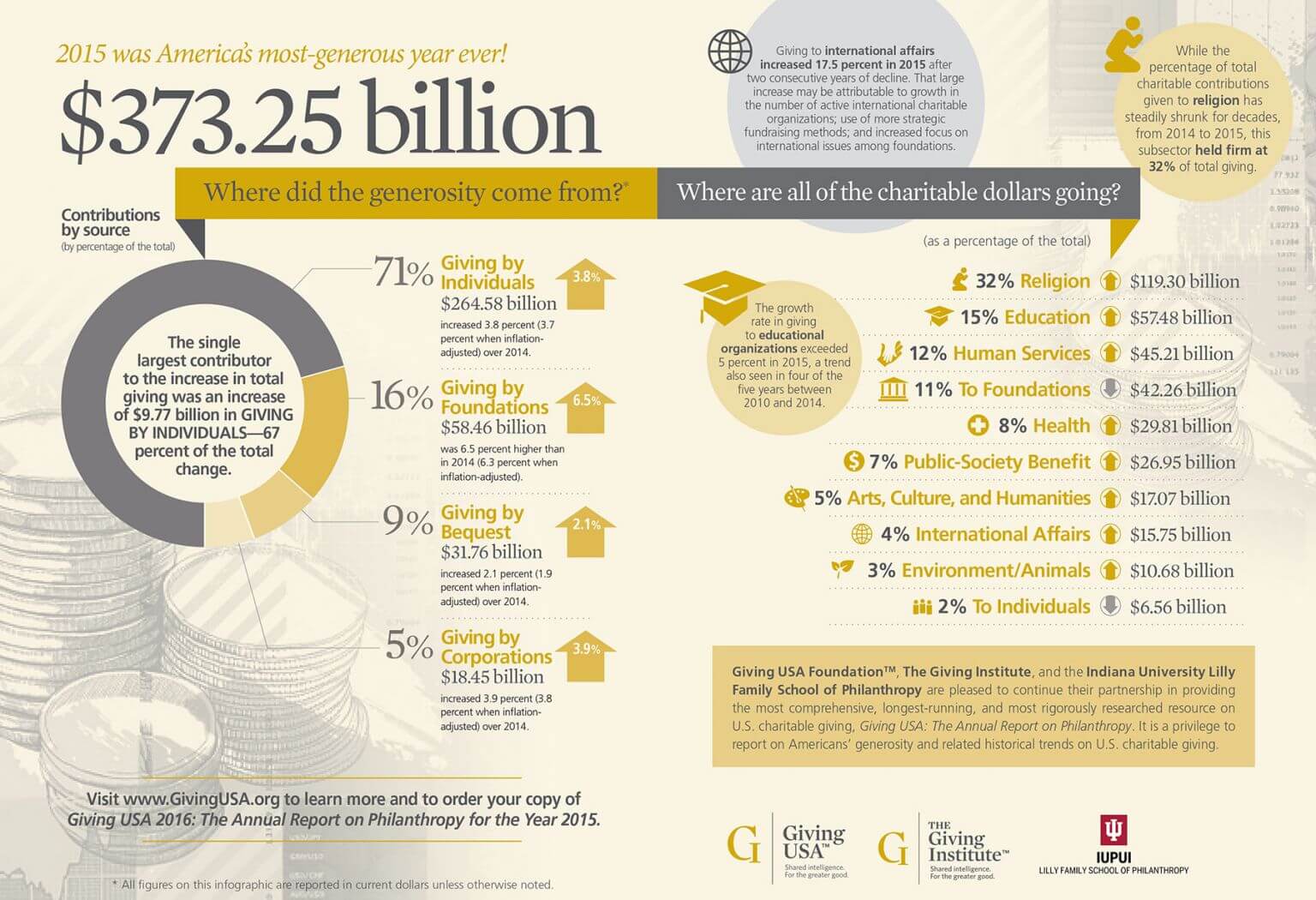Should foundations and donors give more in 2017?
 by: Kate Fitzsimmons
by: Kate Fitzsimmons
After the acrimony of a too long campaign season and the 2016 November surprise, I am feeling fatigue. I don’t know about you, but along with most of my colleagues and clients, I am also shaking my head in disbelief. Now that the shock is wearing off, though, many in the nonprofit sector are looking at their organizations’ fundraising plans with rising anxiety and asking:
- How will the new administration and GOP Congress impact government programs supporting the poor?
- If funding is cut, how will nonprofits retain staff to continue effective programs and services tovulnerable children, families and individuals?
In 2017, some voices are suggesting that foundations and donors should stay the course and give no more than they did in 2016.
Yet, if government programs are cut, will foundations and donors step up to staunch the bleeding? Should they?
Crisis planning is underway and already, arguments are developing on both sides of that question. If foundations, corporations and individuals step up to spend more, as government spends less, Caleb Gayle, in an opinion piece in the Chronicle of Philanthropy insists that, “This is exactly what philanthropy must not do. It should instead exercise strategic restraint. Otherwise, philanthropy is simply making it easier for government to abdicate its responsibilities for helping the needy.”
Gayle’s argument suggests that foundations should spend nothing more than the legally required 5% of their assets a year on charitable purposes. This statement alone raises the hotly contested issue on the 5% rule, what it really means and whether it is a fair and realistic amount to begin with. Leaving that aside, cautioning foundations to give no more than they must, in times of greater need does not sit well with most of us.
Many in the nonprofit sector are quietly hoping foundations will increase their giving in 2017. In an earlier Chronicle article, one of the more outspoken voices came from Vu Le, executive director of the Rainier Valley Corps and blogger (Nonprofit With Balls). He urged foundations to toss aside their risk-averse tendencies and step into the void that will open as the government pulls back.
I encourage you to dig into both writers’ arguments, as they represent polar opposite views. I doubt that it will come as any surprise to you that Gayle is a foundation guy. Gayle worked as a program officer at the George Kaiser Family Foundation. I get their points and land firmly on the side of encouraging foundations, corporations and individuals, especially the wealthy, to increase their giving, even, in the face of uncertainty.
As a fundraiser working with small to medium and large nonprofits, I’ve seen firsthand how funding cutbacks can disrupt and even devastate an organization. The great recession left few untouched. Shifts in funding went swiftly away from arts and culture organizations to safety-net services, like food banks and shelters. Some organizations were forced to close their doors, while others were only recently beginning to feel more confident about their future.
After a period of steep decline, giving has increased year-to-year.
Though philanthropic giving dropped drastically between 2008 and 2010, Americans are immensely generous. Our giving in 2015 reflects that. 2016 numbers haven’t been tallied yet, but signs indicate 2016 will show increased giving over 2015, touted as the best year, yet. Individuals still represent the largest percentage of overall giving. With some nonprofits, however, grants still make up an important element in their diversified fundraising mix. Strong foundation support can signal to individual donors that an emerging nonprofit has the confidence of an established institution. Even readily recognized nonprofits with a long history in the community benefit from institutional giving.

Can we put a price tag on the value nonprofits offer?
Nonprofits play a significant role in the over health and well-being of communities. They take risks government programs never will. They also fill in the gap between government programs and those individuals who can’t afford services, but don’t qualify for government aid. Their real value was summed up in another Chronicle of Philanthropy article from 2014, Nonprofits Must Show How They Serve the Common Good. Unlike for-profit businesses, nonprofits try to reduce service demands and work themselves out of a job. As the author states, “And it’s exactly at that juncture, reducing need by strengthening democracy and enhancing civil society, that nonprofits attain their distinction and can fully realize their extraordinary value across the range of charitable missions. In fact, today’s crises require it.”
This very prescient article also touches on another crucial point. Mark Rosenman wrote, “Government matters in every area of nonprofit concern not only because of its ability to gather and allocate resources to fight problems”…but to work on prevention. His piece goes on to state that the failure of government to do so has created a deeper problem of Americans feeling disillusioned with their own institutions. Since nonprofits and the philanthropic community make up one of those institutions we face an uphill task.
“Given the failures of political leaders and the self-serving successes of the corporate world, it falls to charities to reverse these trends for themselves and the rest of society.”
Mark Rosenman
Beyond social value.
So how do we tell our story effectively? What may surprise many is the added economic value nonprofits bring to their communities. Actual state focused reports detail the reasons why this is true. One of these reports, Causes Count, The Economic Power of California’s Nonprofit Sector, gives our local nonprofits the ability to talk about their impact beyond social value. This assertion could prove to be a very useful tool in an era when job retention and expansion are so much in the Twittersphere.
Foundations and their willingness to give more, now, could be at the forefront of promoting both the social and economic value nonprofits represent. As fundraisers, we need to provide all donors with a strong argument for the ROI their increased giving can realize. If you haven’t used one of these reports to bolster your fundraising efforts, now would be a good time to start. The hard work continues and Stronger Together is still the best axiom.

